Today is May 8th. It’s the day when Luis Guillermo Solís will become a former president of Costa Rica, and Carlos Alvarado will be sworn in as the country’s 48th president. We gather at the Plaza de la Democracia in San José, where people from around the country come together with one purpose: the future that is in our hands. The future that belongs to a nation under the direction of President Carlos Alvarado who needs to unite the country on a path of improvement.
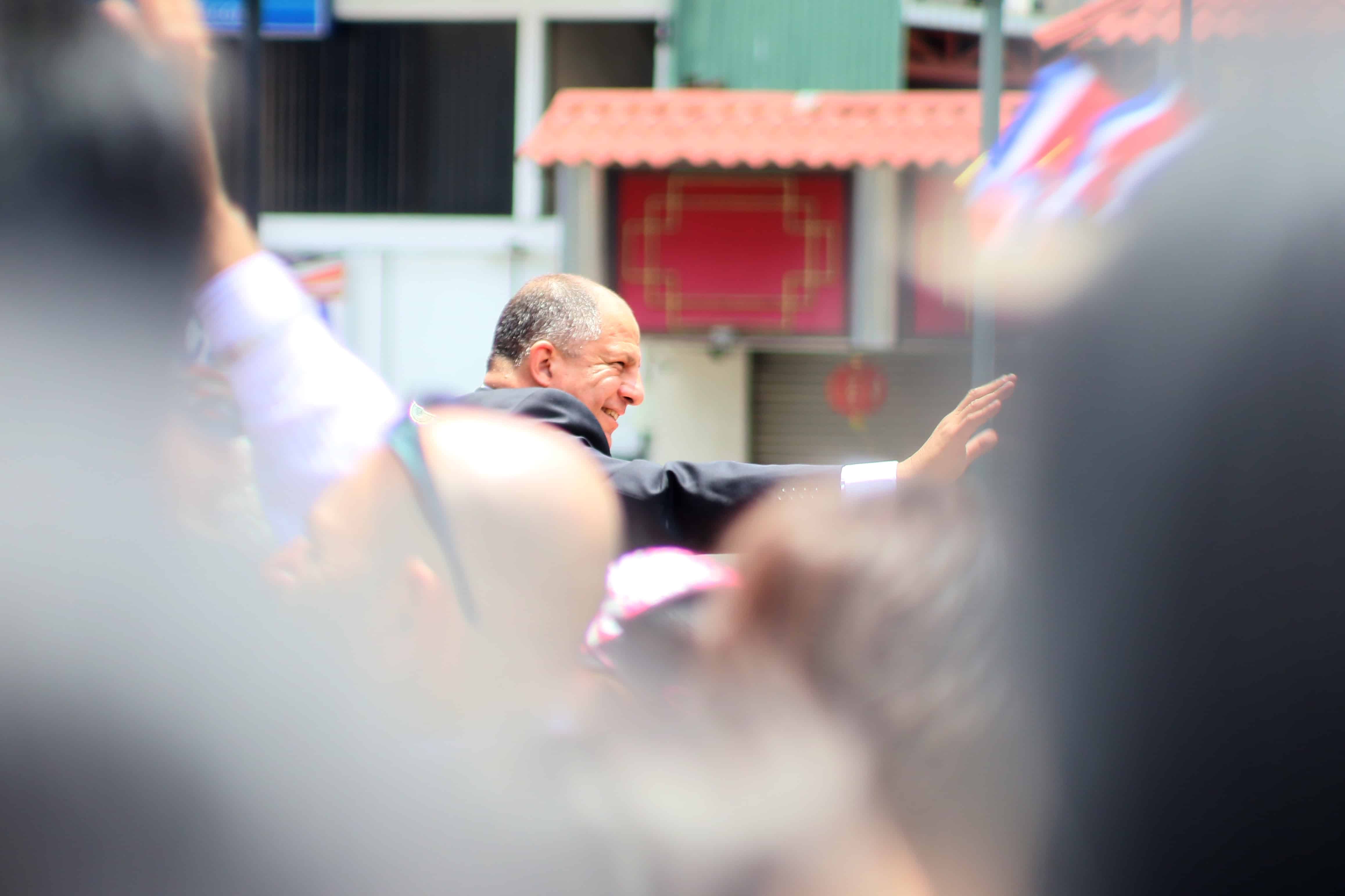
That unity was the key factor for Alvarado’s win in the second round. The Citizen Action Party (PAC) reached an agreement with the Social Christian Unity Party (PUSC), members of the National Liberation Party (PLN), and the Broad Front (FA) on common principles for governance.
As the ceremony begins, Carolina Hidalgo (PAC), the new president of the Legislative Assembly, announces the arrival of the legislators from these parties, along with the National Restoration Party (PRN), National Integration Party (PIN) and the Social Christian Republican Party. The left-wing Broad Front’s only legislator, José María Villalta, is the assembly member who receives the applause from the crowd.
The citizens gathered there clap and call to the legislators to work hard, because that’s the future in our hands: a Costa Rica that works.
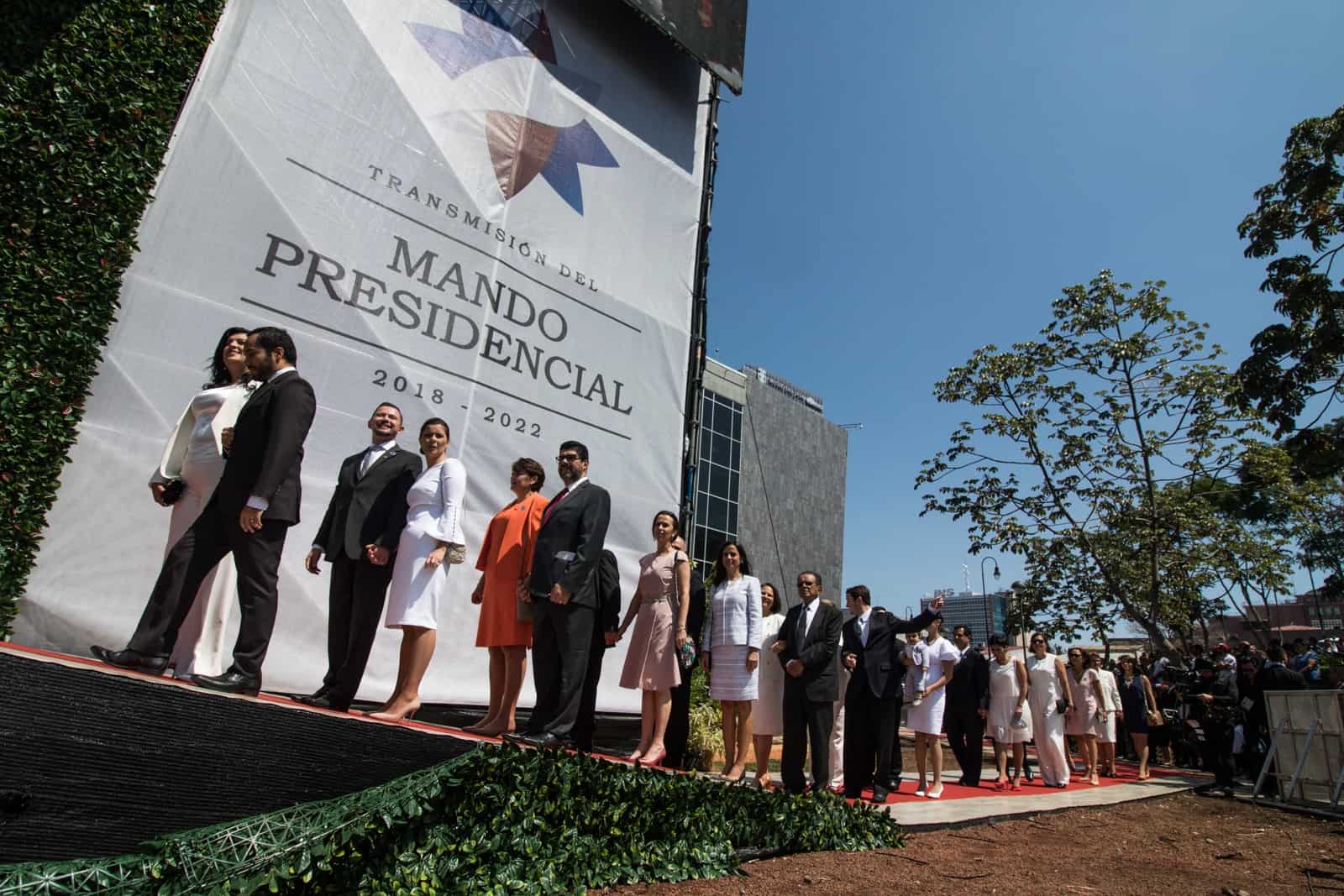
Carolina Hidalgo proceeds to welcome international representatives from Panama, Guatemala, El Salvador, Dominican Republic, Bolivia, the United Kingdom, Ecuador, Spain, Jamaica, Morocco, Cuba, Argentina, Colombia, Mexico and Honduras.
This cultural diversity is present not only onstage, but also in the audience behind us. It’s present in the flags of the transgender collective, which reads “from us for us;” in the people in wheelchairs; in the people of color; in the indigenous people; in the students from public high schools; in the people from the LGBTI community, and even in the tourists who happened to pass by. This is what Carlos has made evident, or at least what he tries to communicate: that it’s a government for the people.

Hidalgo welcomes outgoing Vice Presidents Ana Helena Chacón and Helio Fallas (Costa Rica has two vice presidents, first and second). Chacón, who is known for her work with minorities in the Costa Rican population, walks onstage to shouts of “¡Gracias Ana!”
Behind them come the outgoing Cabinet ministers followed by President Luis Guillermo Solís and his partner Mercedes Peñas Domingo. Again, the people shout a thank you.
It’s now the time to welcome Alvarado’s new Cabinet for the 2018 – 2022 administration. Rodolfo Piza (PUSC), the new minister of the presidency, is at the head of the line followed by the rest of the team. While they walk on stage, again the people shout at them “¡A trabajar!” (“Time to get to work!”) and “Patricia! Patricia!” in reference to Patricia Mora, the new National Women’s Institute (INAMU) president who worked in the past administration as part of the investigative commission fighting against corruption.
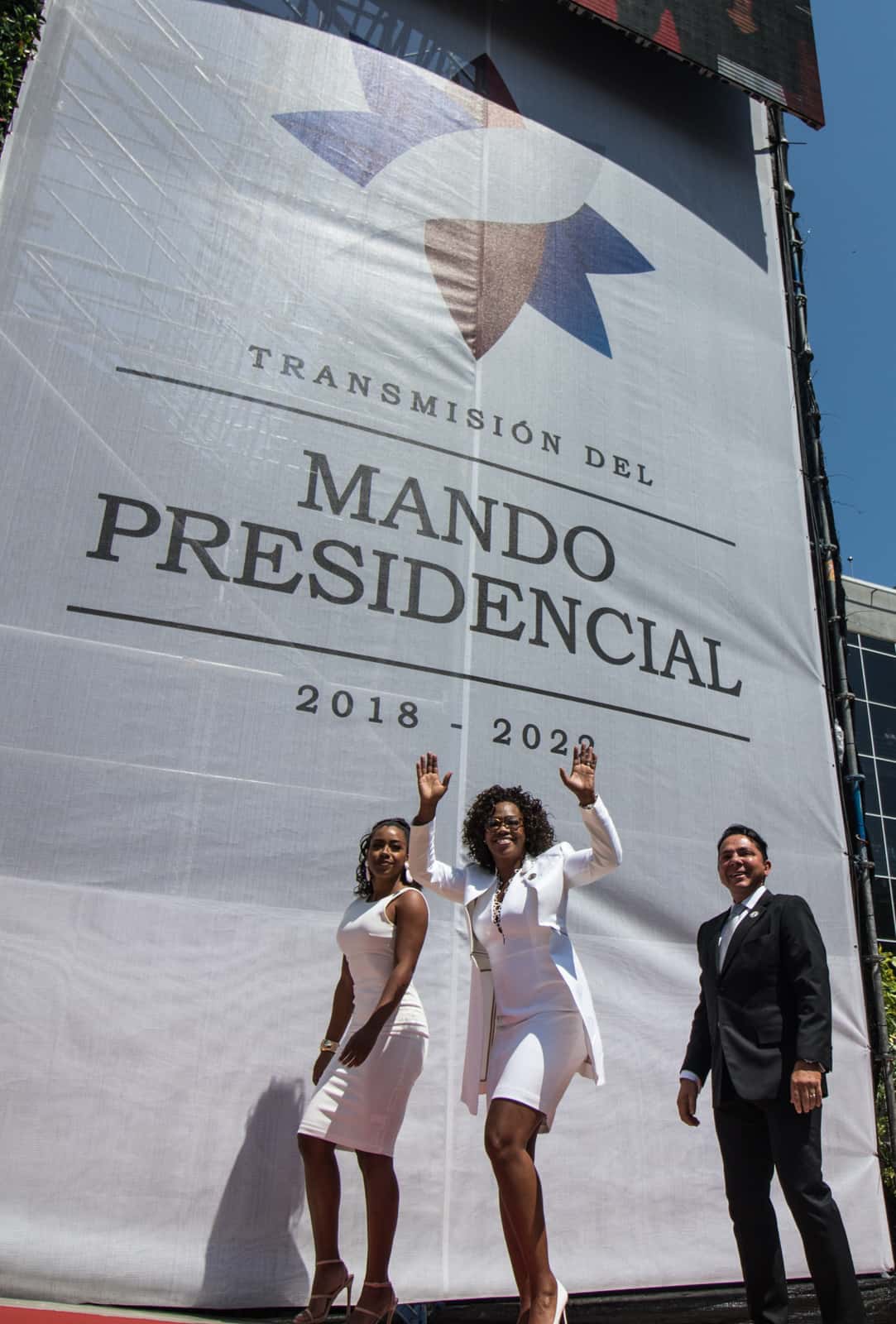
Epsy Campbell, the first Afro American woman in Latin America to become a vice president, and Marvin Rodríguez, second vice president, walk on stage. Afterwards, Hidalgo tells us that Carlos Alvarado and the first lady, architect Claudia Dobles, have arrived on Central America’s first hydrogen-fueled bus, which was escorted by a team of cyclists.
As Alvarado and Dobles take the stage, people shout, “¡Sí se pudo! ¡Sí se pudo!” (“Yes, we could! Yes, we could!”). They are followed by the entrance of the pabellón nacional, with the Costa Rican flag carried by Sean Miranda, a transgender high school student from the CTP Dos Cercas in Desamparados.
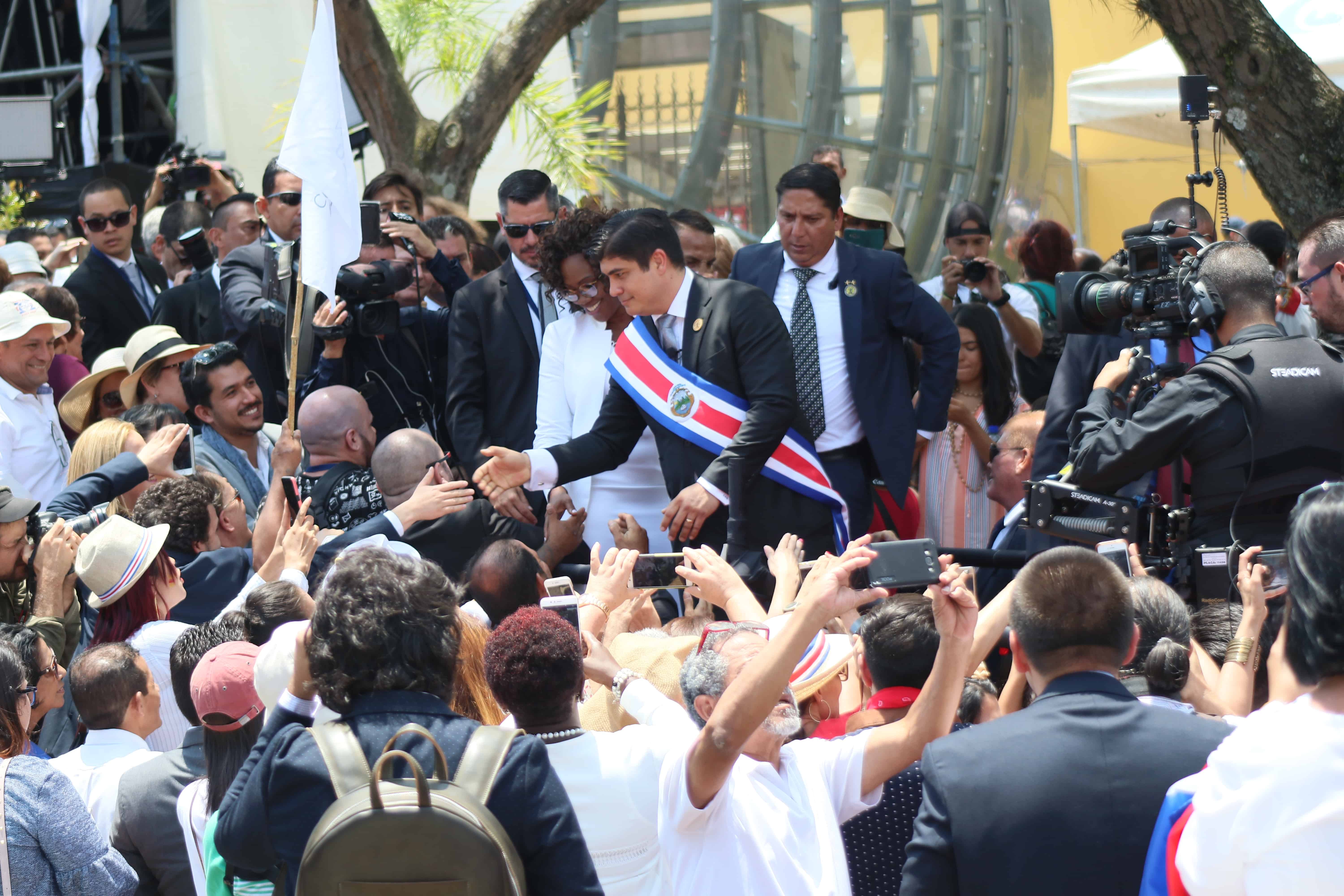
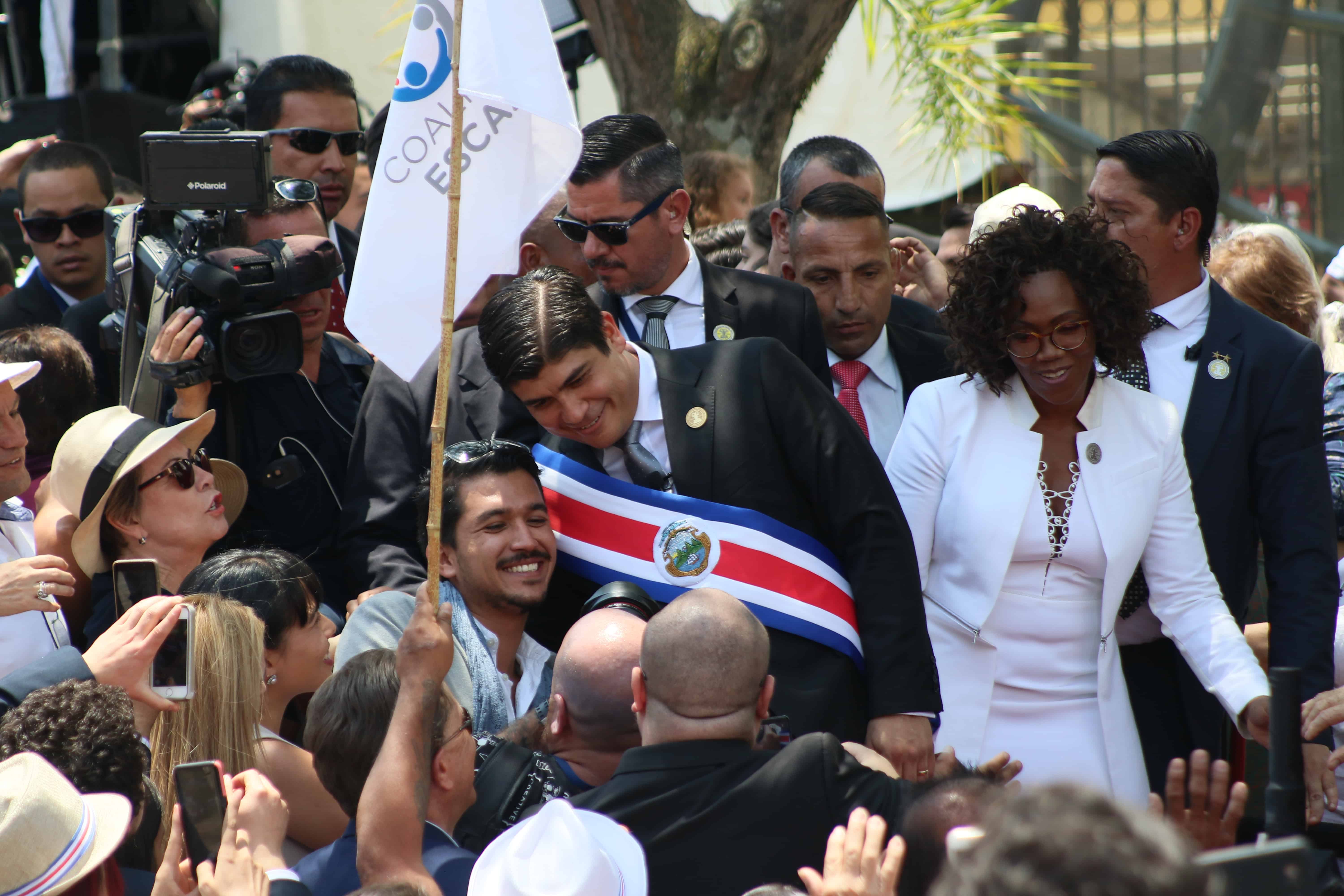
The National Symphony Orchestra now plays the national anthem, and Hidalgo proceeds to swear in President Carlos Alvarado. In his inaugural address, he asks the audience: What comes next?
The answer he describes is simple, but difficult to carry out. Simply building the country. Simply giving a hand to those who need it most. Simply celebrating the bicentennial government of Costa Rica by creating a dialogue in a unity government. Simply uniting the people through a multiparty government cabinet where women have access they’ve been historically denied. (His Cabinet ministers include 14 women and 11 men.)
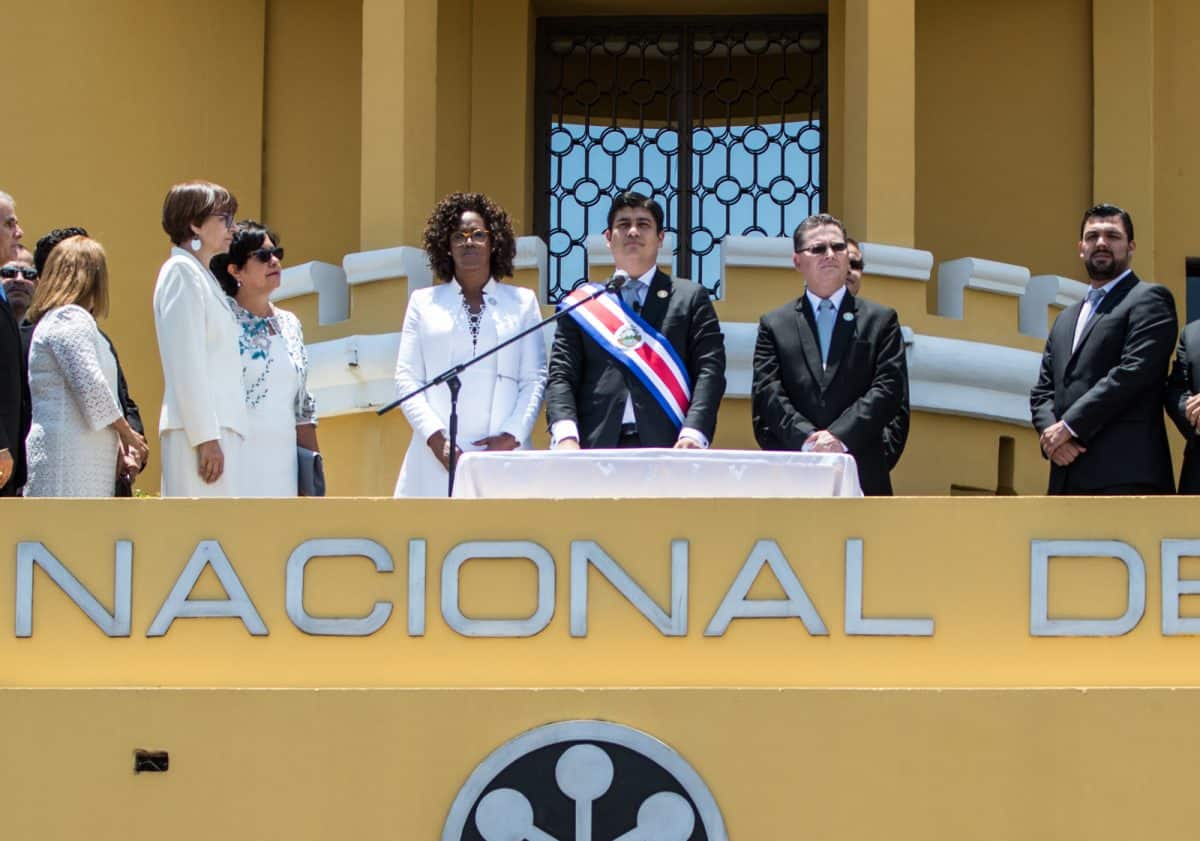
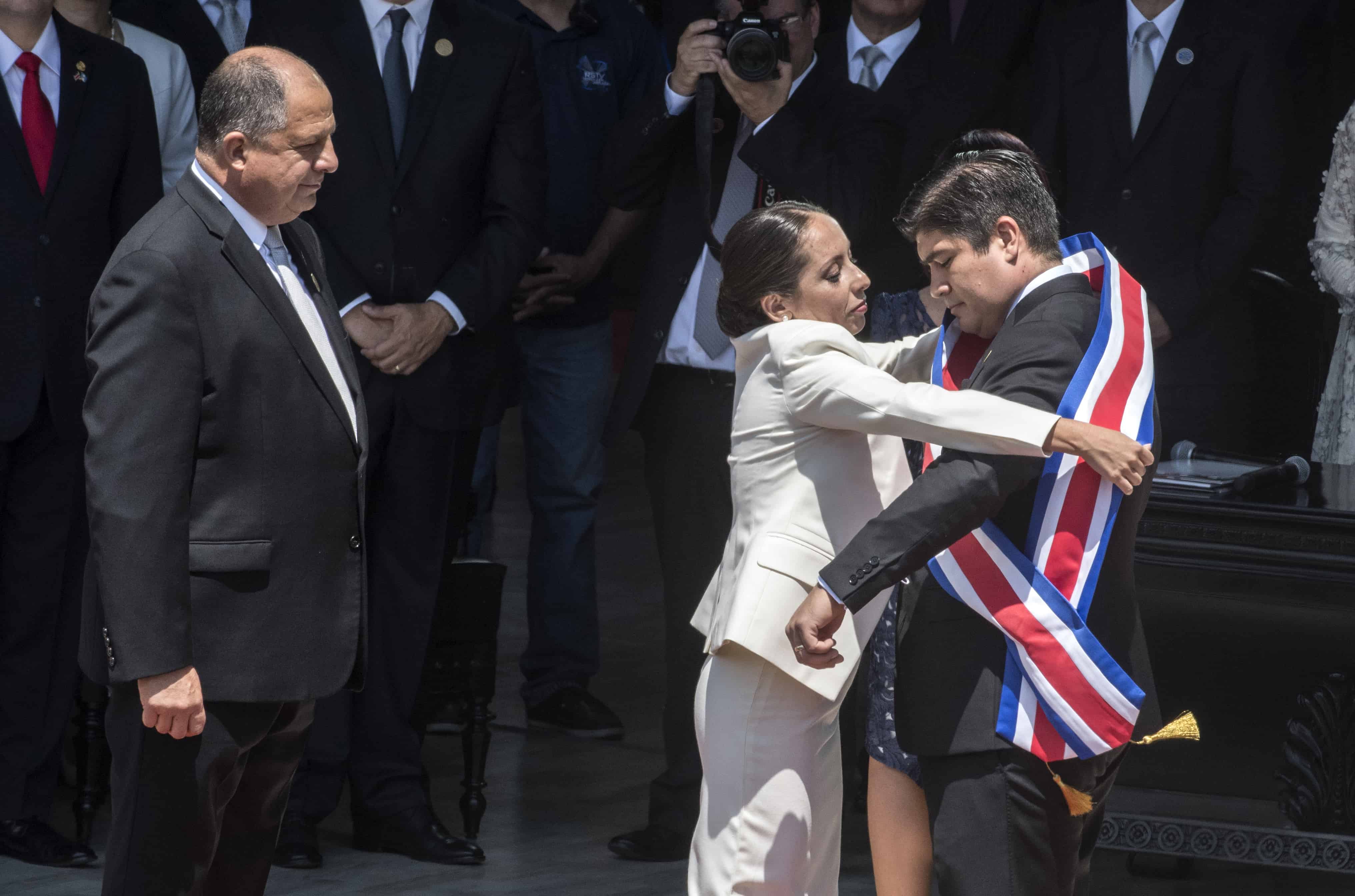
Here’s where those simple solutions face huge challenges as a country, where Carlos acknowledges that there’s no time to be lost given the country’s serious fiscal deficit. In his speech, he sets the goal of decreasing the deficit from 6.2 percent to 3 percent of GDP before he leaves office.
He also calls for citizens to play an active role in government, and announces seven pillars of his administration: education, security, health, environment, infrastructure, employment and economic stability.
He shouts that the future is in our hands. A future that must be built as a team, without exclusion, to honor the country our grandfathers and grandmothers built.
Afterwards, we watched Costa Rican singer Carlos Guzmán sang “Yo soy tico” (“I’m tico”) accompanied by a Maleku indigenous woman and the National Symphony Orchestra, followed by a reading by Afro-Costa Rican poet Shirley Campbell, who mentioned that the government includes representation of her people and indigenous groups as well.
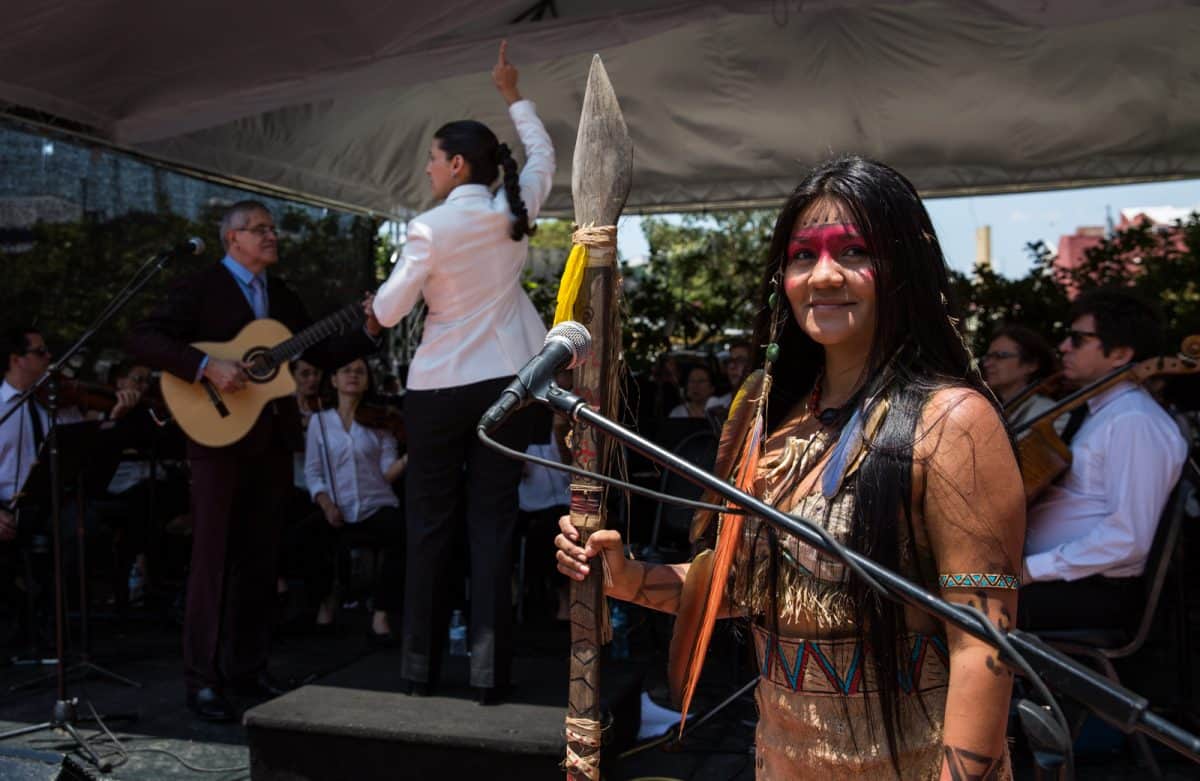
The Plaza de la Democracia then fills with music. We listen to the band Claroscuro, a women band that sings for women’s rights. Master Key is next and they gladly share with the audience their happiness about an administration where their Afro American community is included.
María Pretiz plays the keyboard and speaks directly to the president about building gardens for the country; Bernardo Quesada dedicates his songs to the victims of Costa Rica’s recent femicides; Manuel Obregón is plays the accordion.
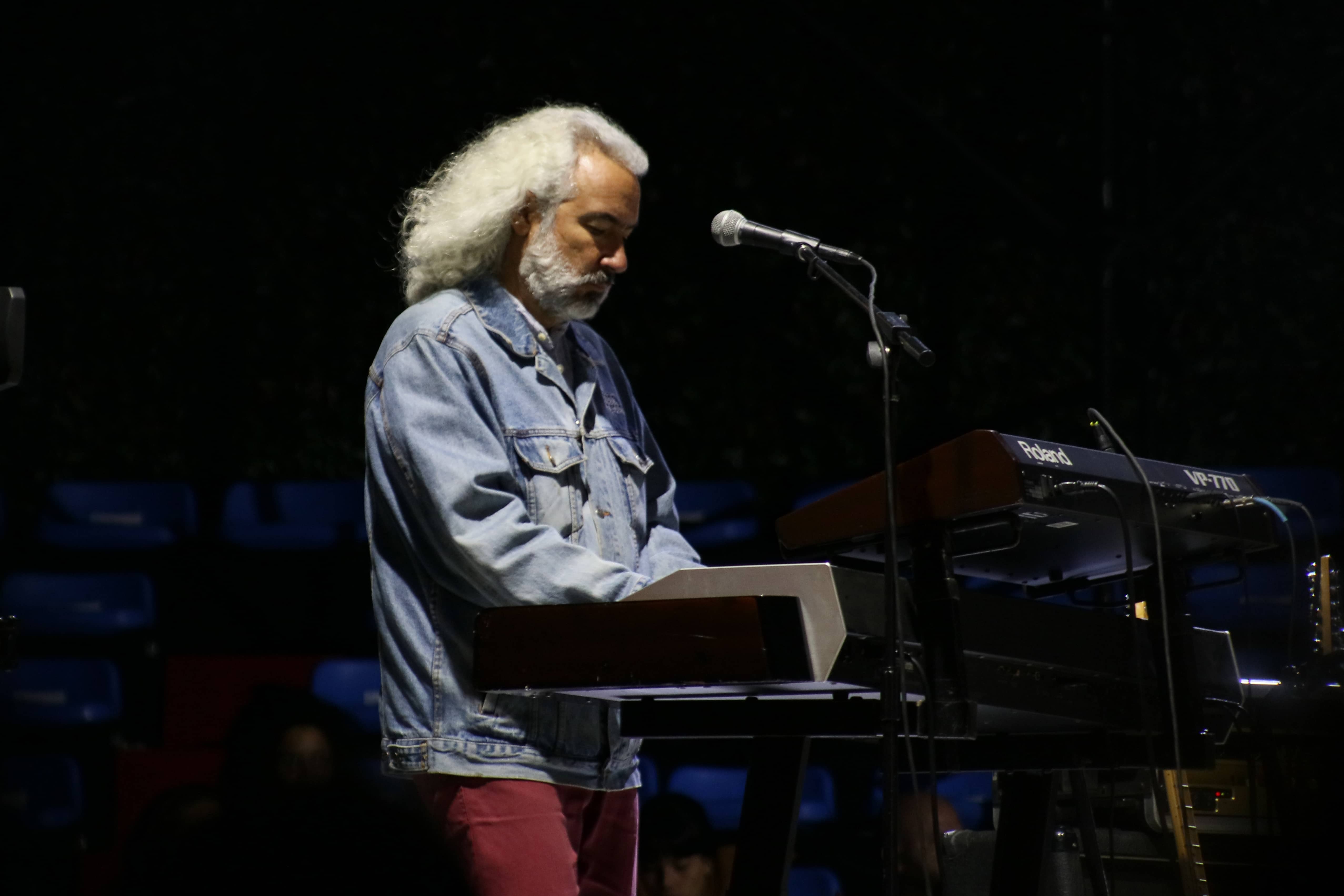
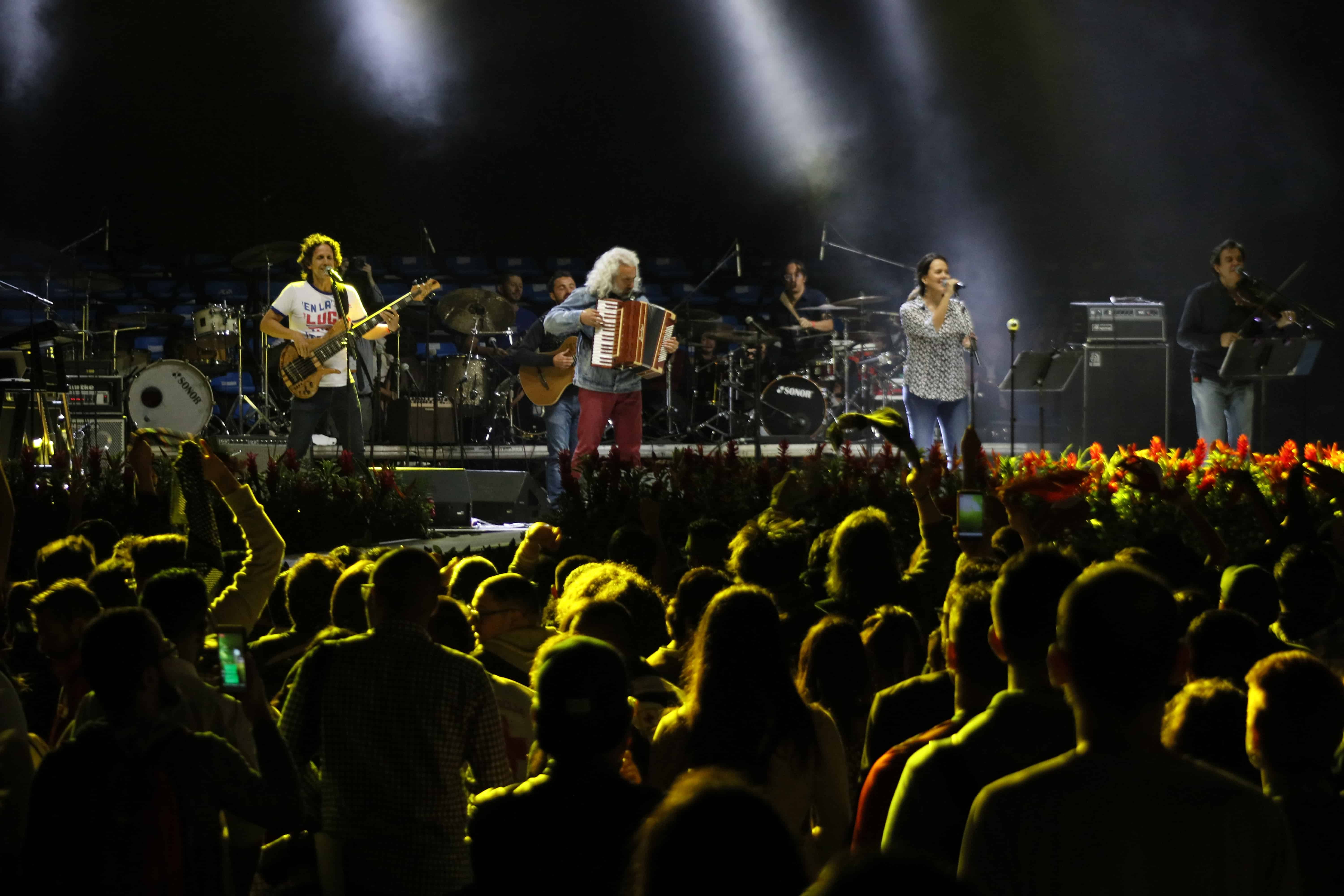
Gandhi is up next, and singer Luis Montalbert Smith quotes Michael Jordan while on stage, saying that talent wins matches, but teamwork wins championships. He wears the Costa Rican flag around his shoulders and then invites all the musicians onstage as well as Carlos Alvarado and Claudia Dobles. It’s a Costa Rican party.
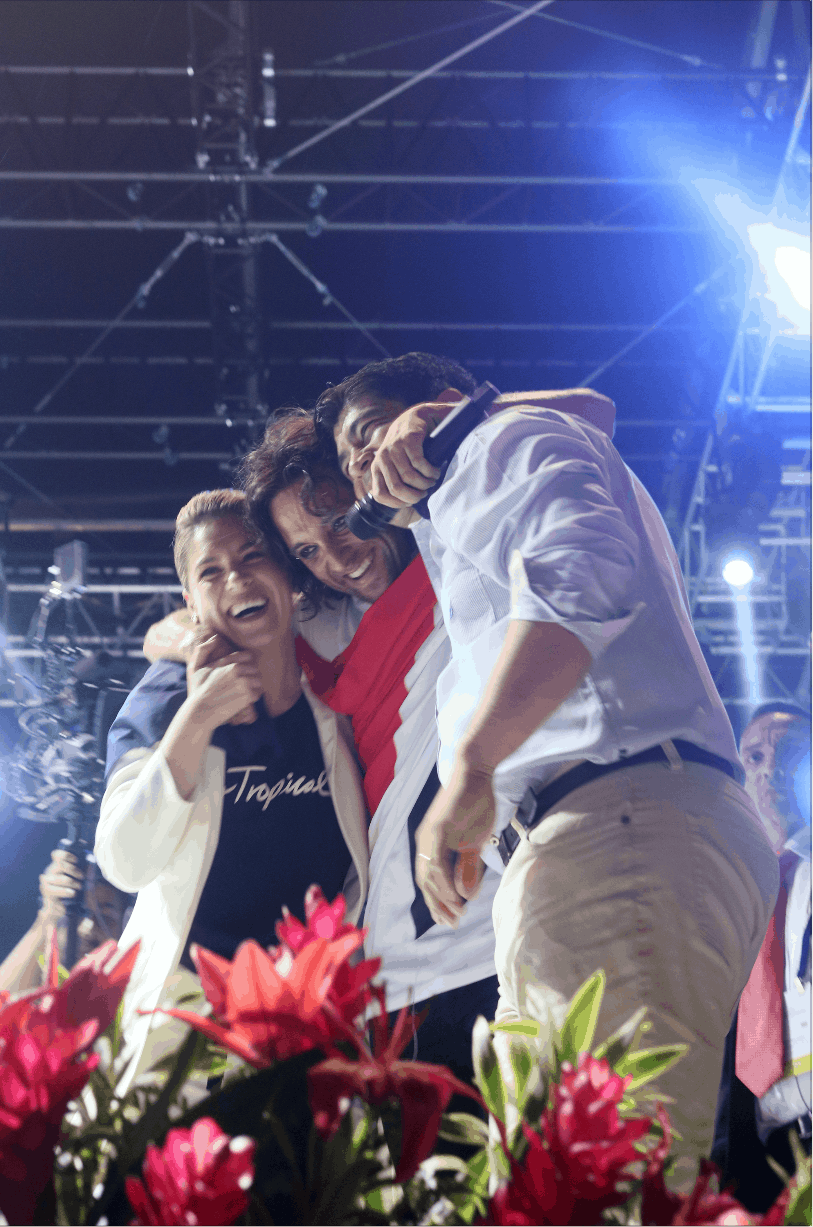
Musician Max Goldenberg is next and Costa Rican band Malpaís joins them, with musician Jaime Gamboa wearing a T-shirt that reads En la lucha tenaz (in the tenacious struggle), a famous Costa Rican phrase from the national anthem.
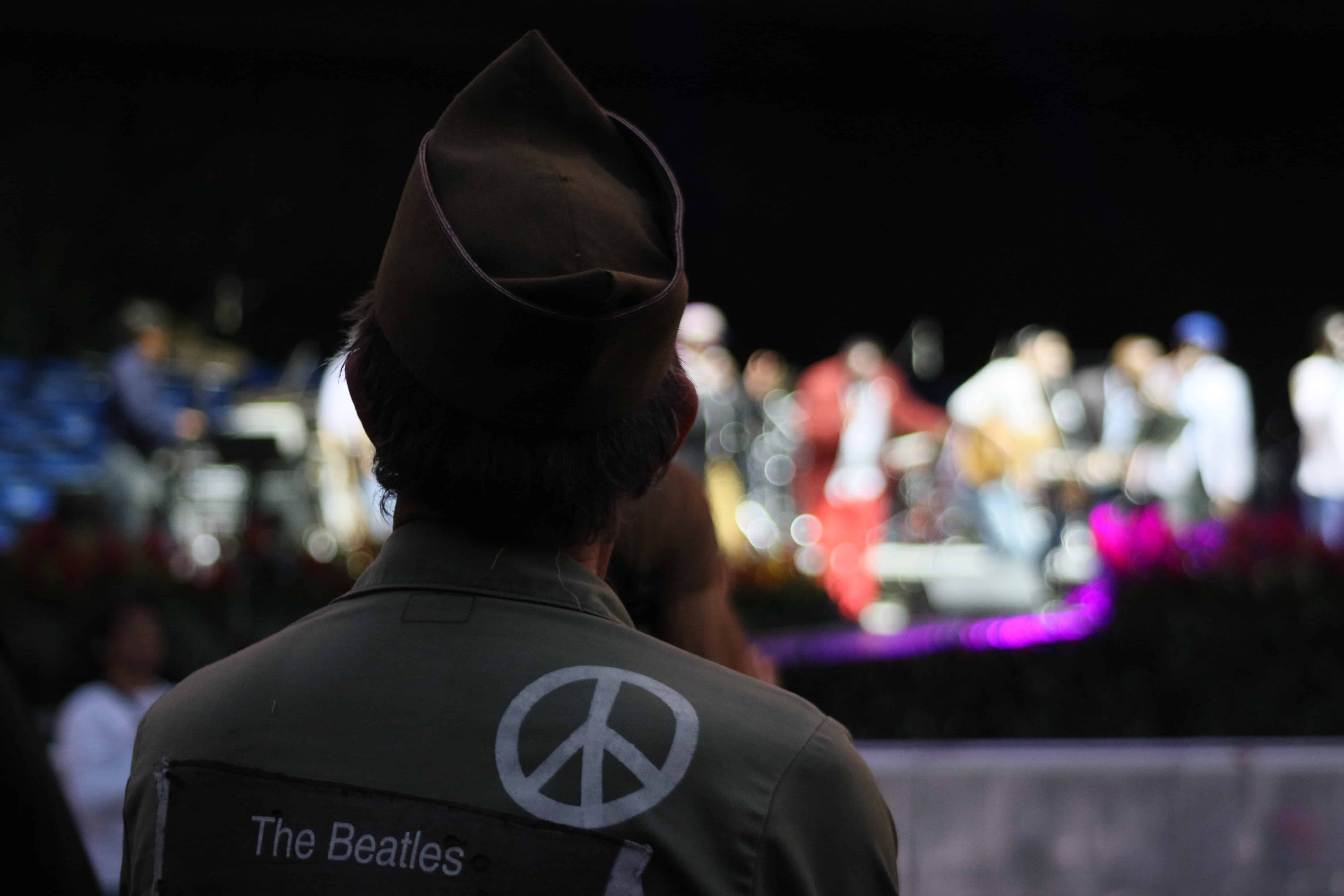
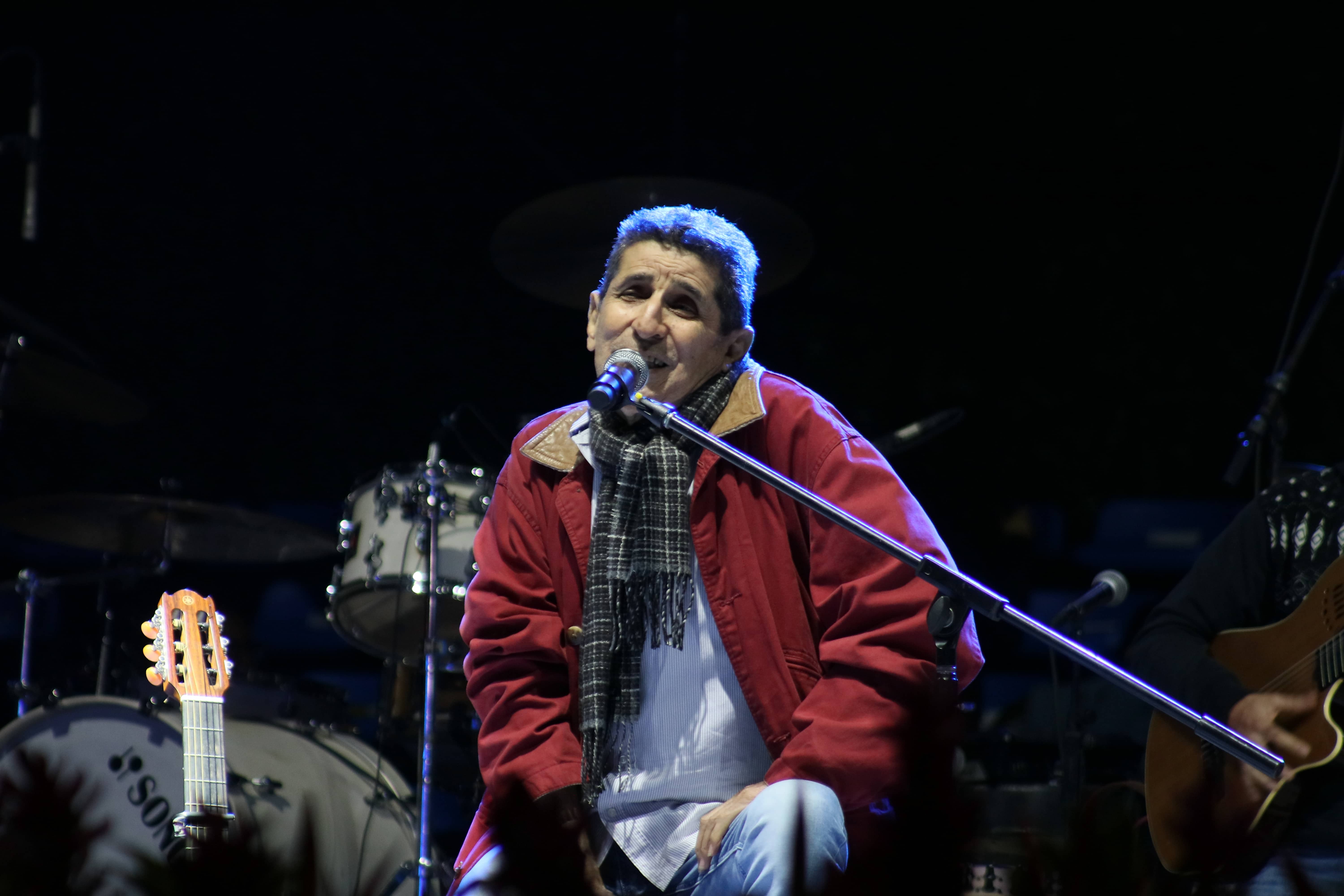
As the day ends, we know that if we are to create a new Costa Rica, we must work together for a better country. Just as Carlos Alvarado said in his speech: “I promise what I’ve always promised, with intelligence, with equilibrium and with strength: to work, work, and work. Long live Costa Rica, long live Costa Rica and long live Costa Rica a thousand times!”






